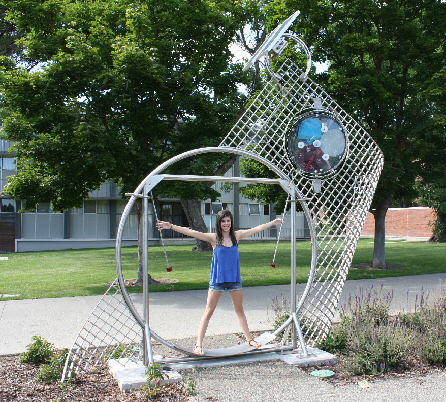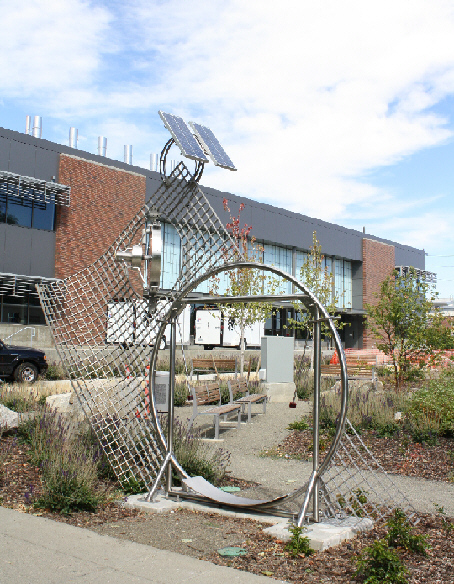|
Luke Blackstone A Gesture for Planetary Alignment Created for Central Washington University, Ellensburg Washington, 2012 Comissioned by the Washington State Arts Commission stainless steel, glass,solar panels, mechanical linkages, polycarbonate, electrical components 12 ft. X 5 ft. X 14 ft. |

|

|
| A Gesture for Planetary Alignment provides the Hogue Hall engineering student with the opportunity to link his or her imagination with that of one of the greatest engineers and artists known, Leonardo da Vinci. The square and circular framework is a reference to da Vinci’s Vitruvian Man drawing, created circa 1487 AD. When a viewer assumes the gesture shown in this drawing while pressing against the two levers, two switches near the pivot points are activated. This sends a signal to a timer, which turns on a gearhead motor for approximately 40 seconds. The motor is powered by the two solar panels, which generate electricity when the location is aligned with the Sun and no cloud formation obstructs the sunlight that falls upon them. The grid forms on the sculpture refer to the computation (or graph) paper that is present on or around most engineers’ desks. This type of paper allows for the quick sketching of ideas and calculations that flow from the brain, through the arm, to the fingers, to a writing instrument, and on to paper for consideration. The “planetary disc” mechanism is based upon several functional types of planetary gear systems used in various machines today. This system uses a central “sun” gear and several “planetary” gears that rotate and revolve around it. They are used to change the torque and speed of the output shaft in relation to its input shaft. In the sculpture however, the motor shaft pushes the three tinted glass discs around the ring, resulting in a change of spatial relationships between the engineering and “life” symbols, which are sandblasted into the glass surface. The red, white, and blue discs refer to the American way of teaching engineering principles. These actions refer to the need of engineers to consider the ever-changing elements of the world, and the constant shifting of societal values and beliefs in order to design valuable and long-lasting projects. |

|
|

|
||